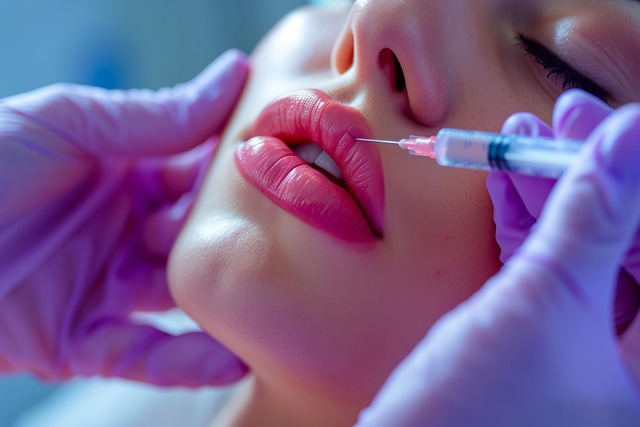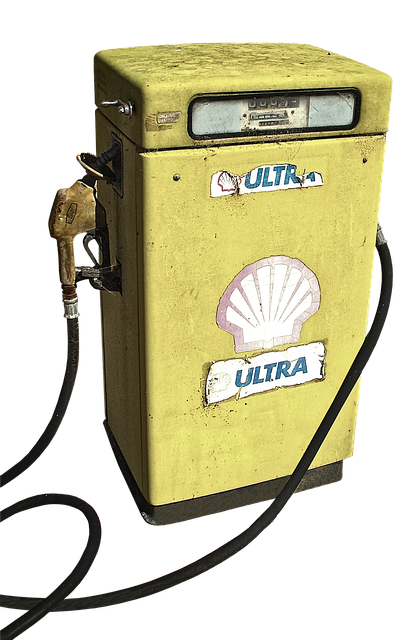Botox and dermal fillers are popular anti-aging treatments for fine lines and wrinkles, each with unique mechanisms. Botox, a muscle relaxant, temporarily paralyzes muscles to prevent dynamic wrinkles (3-6 months), while dermal fillers enhance skin texture by adding volume, providing longer results (up to 2 years). The choice depends on individual needs, preferences, budget, and desired outcomes for achieving a youthful complexion.
“Botox has emerged as a popular option in the skincare realm for preventing and reducing fine lines. This article delves into the science behind this injectable treatment, exploring its effectiveness in smoothing out skin’s appearance. We compare Botox to dermal fillers, highlighting their unique properties and ideal applications.
Learn about the causes of fine lines, the mechanics of Botox injections, and the pros and cons of using it for preventive measures. Additionally, we guide readers through patient expectations and realistic outcomes, offering insights to help choose between Botox and dermal fillers for optimal results.”
Understanding Fine Lines and Their Causes

Fine lines, often the first visible signs of aging, are a natural part of life, but many individuals seek ways to prevent or reduce their appearance. Understanding what causes these lines is key to choosing the right treatment. Both environmental factors and intrinsic aging processes contribute to the formation of fine lines and wrinkles. Environmental influences, such as sun exposure, pollution, and smoking, accelerate skin aging by damaging collagen and elastin fibers, which are responsible for skin’s firmness and elasticity. Over time, this leads to the development of static lines—creases that remain even when the face is at rest.
When considering prevention methods, Botox and dermal fillers stand out as popular choices. While both offer anti-aging benefits, they work differently. Botox, a protein derived from bacteria, temporarily paralyzes facial muscles, preventing excessive movement that contributes to dynamic lines. It’s particularly effective for crow’s feet, forehead wrinkles, and frown lines. On the other hand, dermal fillers boost skin volume by injecting hyaluronic acid or collagen into deep facial layers, smoothing out static lines and enhancing overall face shape. In terms of Botox vs. dermal fillers, each has its advantages; the former is ideal for preventing dynamic wrinkles, while the latter is more suitable for addressing existing fine lines and restoring volume loss.
The Role of Botox in Preventing Fine Lines

Botox has established itself as a leading prevention method for fine lines and wrinkles, offering a non-invasive alternative to surgical procedures. Its primary mechanism involves blocking specific nerve signals that trigger muscle contraction, which over time can lead to dynamic (expression-related) wrinkle formation. By relaxing these muscles, Botox prevents the deep creases and lines from forming or becoming more pronounced. This is particularly effective for forehead lines, frown lines, and crow’s feet.
In comparison to dermal fillers, which add volume and plumpness to the skin, Botox focuses on muscle relaxation. While dermal fillers can provide instant results, Botox offers a gradual yet sustained effect, making it ideal for those seeking subtle improvements over time. This aspect also makes Botox a preferred choice for preventive measures, as it allows individuals to maintain a youthful appearance without the need for frequent top-ups like some dermal filler treatments.
How Dermal Fillers Compare for Similar Purposes

When it comes to preventing and reducing fine lines, Botox and dermal fillers are two popular choices often compared for their similar purposes in cosmetic treatments. While both injectable procedures have their merits, they work in distinct ways. Botox is a neurotoxin that relaxes muscles, preventing them from contracting and causing wrinkles. It’s particularly effective for dynamic wrinkles, those formed by facial expressions. On the other hand, dermal fillers enhance the skin’s texture and volume by injecting a substance beneath the surface, plumping up areas that have lost elasticity over time. This makes them ideal for static lines and volume loss.
The key difference lies in their mechanism of action and duration. Botox offers a temporary effect, typically lasting 3-6 months, making it a popular choice for preventive care as it can be repeated regularly. Dermal fillers, however, provide longer-lasting results, sometimes up to two years or more, depending on the product used. This longevity makes them a more permanent solution for fine line prevention and volume restoration. The choice between Botox vs dermal fillers often depends on individual preferences, desired outcomes, and budget considerations.
Pros and Cons of Using Botox for Fine Line Prevention

Botox has emerged as a popular choice for fine line prevention, offering a non-invasive approach to slowing down the aging process. Its key advantage lies in its ability to relax facial muscles, reducing dynamic lines and wrinkles caused by continuous contraction. This results in a smoother, more youthful complexion. However, it’s essential to consider that Botox is best suited for specific areas like forehead wrinkles, frown lines, and crow’s feet. It may not be as effective for static wrinkles or deeper folds, where dermal fillers could provide better long-lasting results.
When compared to dermal fillers, Botox presents a different approach. Fillers enhance the skin’s texture by adding volume and plumping up deep wrinkles, providing instant results that can last for several months. In contrast, Botox works gradually over time, taking a few days to a week to take effect and offering benefits that typically last 3-6 months. The choice between the two depends on individual preferences, budget, and the specific concerns one wishes to address in their quest for younger-looking skin.
The Science Behind Botox Injections

Botox injections have become a popular choice for fine line prevention, offering a non-invasive approach to skincare. The science behind this procedure involves a protein called botulinum toxin, which is injected into specific muscle groups to temporarily relax them. This relaxation effect prevents the muscles from contracting, reducing the appearance of dynamic lines and wrinkles that form due to facial expressions.
Unlike dermal fillers that add volume and enhance the skin’s texture, Botox focuses on reducing existing fine lines by preventing their formation. It’s a popular choice for individuals seeking subtle yet effective results, as it provides a natural-looking enhancement without altering the skin’s overall appearance. This method is particularly appealing for those considering an alternative to surgical procedures or dermal fillers, offering a quick and minimal recovery option.
Patient Expectations and Realistic Outcomes

When considering Botox for fine line prevention, patients often have specific expectations regarding their appearance and skin quality. It’s crucial to manage these expectations by discussing realistic outcomes. Unlike dermal fillers, which can add volume and define facial contours relatively quickly, Botox works by relaxing muscles, reducing dynamic wrinkles caused by facial expressions. Results typically take 2-4 days to become apparent and last for 3-6 months, offering a gradual yet effective solution.
The beauty of Botox lies in its subtlety. It aims to prevent the formation of fine lines and wrinkles rather than drastically altering one’s natural features. When compared to dermal fillers, which can cause more dramatic changes, Botox provides a more natural look. Patients should understand that multiple treatments may be necessary to maintain optimal results, emphasizing the importance of long-term commitment for sustained prevention.
Choosing Between Botox and Dermal Fillers: Key Factors

When considering treatments for fine line prevention, individuals often find themselves questioning: Botox or dermal fillers? Both offer effective anti-aging solutions but cater to slightly different needs. Understanding the nuances between Botox vs dermal fillers is crucial in making an informed decision.
Key factors to consider include the type of treatment, its mechanism of action, and the desired outcome. Botox, a protein derived from bacteria, works by temporarily paralyzing muscle movement, reducing dynamic wrinkles. Dermal fillers, on the other hand, are injectable substances that add volume to the skin, smoothing out static lines. The choice between them depends on personal preferences, the depth and type of wrinkles, and the desired longevity of the treatment effects.
